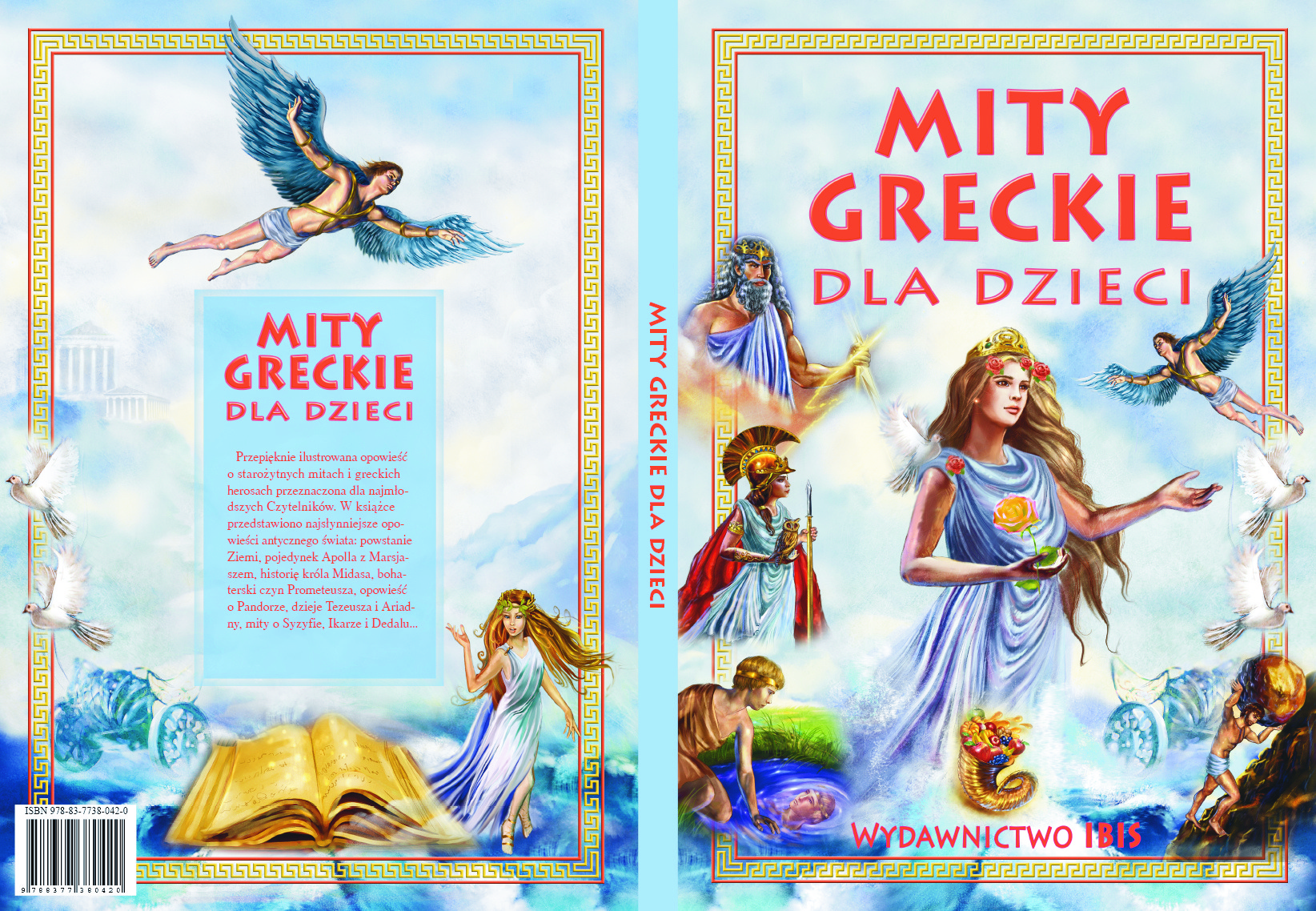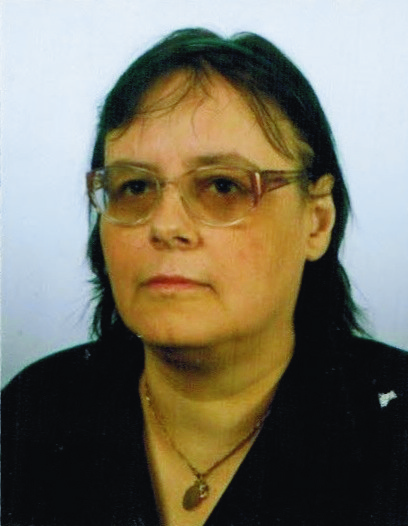Title of the work
Country of the First Edition
Country/countries of popularity
Original Language
First Edition Date
First Edition Details
Agnieszka Nożyńska-Demianiuk, Mity greckie dla dzieci, ill. Iwona Walaszek. Poznań: Wydawnictwo IBIS, 2010, 115 pp.
ISBN
Genre
Time-travel fiction
Target Audience
Children
Cover

Scan of the cover kindly provided by Wydawnictwo IBIS.
Author of the Entry:
Summary: Marta Adamska, University of Warsaw, m.adamska91@student.uw.edu.pl
Summary: Dorota Bazylczyk, University of Warsaw, dorota@bazylczyk.com
Analysis: Hanna Paulouskaya, University of Warsaw, hannapa@al.uw.edu.pl
Peer-reviewer of the Entry:
Elżbieta Olechowska, University of Warsaw, elzbieta.olechowska@gmail.com
Marta Pszczolińska, University of Warsaw, m.pszczolinska@al.uw.edu.pl

Photograph courtesy of the Author.
Agnieszka Nożyńska-Demianiuk
, b. 1964
(Author)
Born in 1964 in Warsaw. Obtained her first degree at the College of Education at the Institute of Teacher Education in Warsaw (1985). In 1985–1990 studied theology at the Theological Faculty of the Academy of Catholic Theology in Warsaw (graduated with honours). She also studied Polish philology at the University of Warsaw and graduated in 1992. Since 1995, she wrote several articles and books on methodology, literature and teaching of Polish language. From 1997 to 2000 cooperated with educational magazines for children and teenagers Cogito and Victor publishing articles on language and interpretation of modern poetry. At the same time, she started to collaborate with the publishing house RM and wrote many educational books for teachers and students, like Jak analizować poezję na maturze [How to Analyze Poetry at the High School Final Exam], 2000; Gramatyka dla gimnazjalistów. To proste [Grammar for Middle School Students. It’s Simple], 2003; Czytanie ze zrozumieniem dla licealistów [Reading with Understanding for High School Students], 2004. Author of two novels for teenagers (the series Klub Muszkieterek [Girl Musketeers Club], 2006–2007), a collection of fairytales for children, and poems for the youngest: the series Poznajemy przyrodę [Getting to Know Nature], 2006; Cyferkowo – kraina wesołych cyferek [Numberland — the Land of Jolly Numbers], 2011; Alfabeciaki, czyli wesoła rodzinka od A do Z [Alphabet Guys or a Cheerful Family from A to Z], 2012. She is also the author of an innovative textbook Bajki ortograficzne [Spelling Fairyfales], 2005, which combines a spelling course with fairytales, two dictionaries for children, and biographical novels, like for example Janusz Korczak. Lekarz o złotym sercu [Janusz Korczak. A Physician with a Heart of Gold], 2011; Kobieta, która stała się legendą. Opowieść o Marii Skłodowskiej-Curie [The Woman Who Became a Legend. The Story of Maria Skłodowska-Curie], 2011. Since 1992 Nożyńska-Demianiuk has been directing an educational institution “Polonista,” providing courses for children and teenagers designed to prepare them for Polish language exams.
Source:
Bio based on the material kindly provided by the Author.
Bio prepared by Marta Adamska, University of Warsaw, m.adamska91@student.uw.edu.pl and Dorota Bazylczyk, University of Warsaw, dorota@bazylczyk.com
Summary
Based on: Katarzyna Marciniak, Elżbieta Olechowska, Joanna Kłos, Michał Kucharski (eds.), Polish Literature for Children & Young Adults Inspired by Classical Antiquity: A Catalogue, Faculty of “Artes Liberales”, Warsaw: University of Warsaw, 2013, 444 pp.
Kacper is a little boy who decides to be strong and brave while his parents are out. However, it is tough when you are all alone in a new house at night when everything is strange and scary. So he goes to the attic to stay there until his parents return. He quickly falls asleep but a strange noise wakes him up. He realizes that he is not alone. His mysterious companion is a small wood nymph who “jumps” out of a book called Mythology of the Greeks and Romans. Kacper is fascinated by his new friend and her strange book and decides to help the nymph find her way home. She takes him to Mount Olympus and shows the boy the fantastic world of ancient gods and heroes.
Analysis
The book is written as a time-travel story, in which the protagonist, Kacper, appears in the world of Greek mythology brought there by a nymph. The nymph tells the myths to Kacper in a form of dialogue – she provides her comments on the myths and the boy reacts and asks questions.
Kacper is six years old, which suggests that the book is targeted at a young audience. However, it contains details not appropriate for young children and sometimes odd pedagogical messages. First, the book starts with a description of a boy who feels guilty about being afraid of staying home alone in the evening (p. 5). He is supposed to sleep when his parents go to the theatre or a concert. Afterward, we learn that he is only six years old, which seems to be a young age for such independence. Even more so, it turns out the family has only recently moved into a bigger house, “a property with a soul”, which makes the child’s fears understandable. Nevertheless, the boy, struggling with his anxiety, goes to the possibly scariest place in the house, to the attic, and falls asleep.
The myths told by the nymph whom Kacper meets in the attic also include questionably violent details. For example, the myth of Marsyas is included, and its end is emphasized:
“I wouldn’t want to cast unjust accusations, in any case, the victor tied poor Marsyas by his hands to a tree and… skinned him alive! Have you ever seen anything like that?”
Kacper’s hair is standing on end in horror:
“That’s terr..rri..ble,” he hisses through his teeth.*
In another fragment, the moment of Athena’s birth is described with very suggestive details presenting the moment when Hephaestus smashes Zeus’ head in half with a huge axe (p. 36).
Otherwise, the book is written in a very vivid way, and contains fairly detailed descriptions of many Greek myths, especially highlighting explanations of proverbs and expressions associated with them. After each myth, there is a box entitled “Zapamiętaj!” [Remember!] that includes difficult words and phrases.
The book contains fantastic, colourful pictures on every page spread. In addition, the pages are tinted in different colours, and the text is printed in brown.
* – Nie chciałabym rzucać niesłusznych oskarżeń, w każdym razie zwycięzca przywiązał biednego Marsjasza za ręce do drzewa i... obdarł go żywcem ze skóry! Widziałeś kiedyś coś takiego?
Kacprowi włosy aż jeżą się na głowie z przerażenia:
– To ss..trasz..ne – syczy przez zęby. (pp. 25–26)


